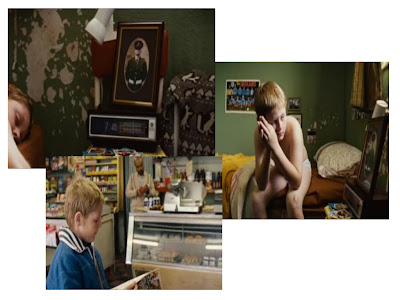The opening could use
Narrative Codes to introduce the plot and create expectations for the rest of the film.
Going by the Narrative structure, the opening should show the "equilibrium" in the plot.
The main character (or characters) are usually introduced to the audience in the opening of the film, though some films such as 'Zombie land' bend this rule, as the creators toy with the audience's expectation of who is the protagonist. However, in films such as 'Juno' and 'Silence of the Lambs' we begin to feel
a personal attachment with the main characters from the very beginning, which
keeps the audience interested in what will happen to them.
- Create an atmosphere and expectations for the rest of the film.
From the opening minutes of the film, you should be able to establish the genre of the film. This will build the audiences expectations for the film, for example, if the text is of the comedy genre the audience will expect the film to be light hearted, upbeat and funny. Looking at 'This is England' as an example, we know that the film is a gritty, British Drama.
- Grab the audiences attention and make them want to continue watching the film.
The opening sequence needs to create a good foundation for the rest of the film that will appeal to the audience and keep their interests. Therefore, the opening should be eye-catching and intriguing.
Title sequences do not always appear at the very beginning of a film, however in most cases they do. The aim of a title sequence is to introduce the name of the film, the main actors and the people who created it. Some actors, directors or producers are associated with a certain genre of film. For example, if you see that Tim Burton is the director the audience will expect a dark, eccentric film.
There are three ways in which a title sequence can appear: Separate Credits/Title sequence; Titles appear over the images as narrative plays; Alternating inserts of narrative and a black screen with credits. As I only have two minutes to create my opening sequence, I think I should either not include a title sequence or use text over images.










